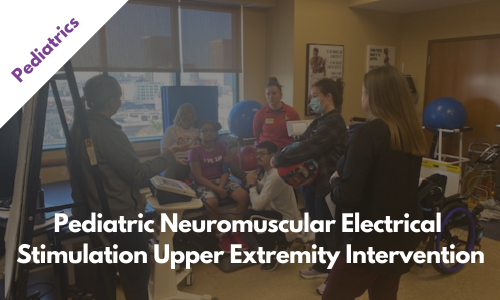This course is designed for pediatric therapists and should be used to supplement the information provided in the following courses:
- Upper Extremity Neuromuscular Electrical Stimulation
- Lower Extremity Neuromuscular Electrical Stimulation
Neuromuscular electrical stimulation provides activation below the level of spinal cord injury to retrain movement through sensory input and external electrical stimulation. The unique parameters associated with the stimulation, specifically the high frequency (100 Hz – 300 Hz) and wide pulse width (1,000 μS – 3,000 μS), drive neural plasticity within the spinal cord. During the activity, multiple muscles are simultaneously stimulated to produce appropriate trunk, upper extremityRefers to an arm., and lower extremityRefers to a leg. movement patterns. The muscles are chosen based on the Participant’s needs and the task-specific item they are performing. The Participant is encouraged to focus on the task-specific item they are performing to increase the overall nervous system excitability.

